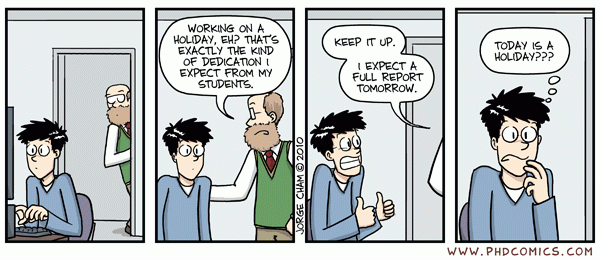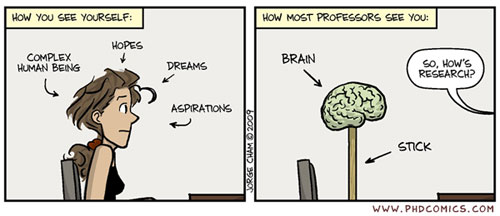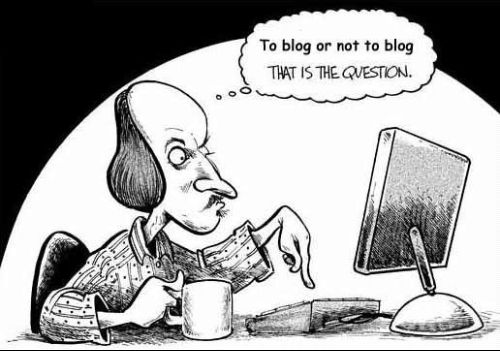Panic mode, initiated?
This was originally posted at: http://blogs.egu.eu/palaeoblog/2013/03/29/panic-mode-initiated/
It’s been 6 months now, and a while since I updated y’all with what it’s like in the world of a PhD-palaeontologist. In case you missed it, my intention was to open up PhD life and research a bit to expose what it’s like beyond the simple production of research papers. Which is probably a good thing, as I don’t have any papers out yet. Setting the cultural default within academia to open is something I’m quite in to, and I guess this is my little contribution to that.
So it’s been a few months since I last posted in this series. During that time, PhD life has been both a feast and a whirlwind of writing, reading, data collection, blogging, socialising, teaching, and most importantly, learning.
Reading
This, I’m actually disappointingly behind on. I don’t like reading pdfs on screen, and just the other day I finished printing out the papers that I’d want to include to some degree in my literature review and analyses, and it ended up being a pile about two and a half feet thick (about 450 papers). Woo. This is both the practical and theoretical aspects of my project, and includes articles on mass extinctions, ecological selectivity, environmental and biotic co-evolution, geological megabiases, tetrapod macroevolutionary dynamics, and some stuff on dinosaurs to lessen the pain. I want to get my literature review done by 9 months, so the next 3 months should be a gas.
Writing
This has happened on two fronts. First up, and not related to my PhD but still teaching me valuable writing skills is the stuff you’re all reading now – das blog. This has proven invaluable, I think, for helping me begin to understand how to break complex scientific issues down and communicate them in an exciting and informative manner (at least, I hope that’s how it comes across!) Secondly, it improves my ability to extract information from articles and shed it in a new light, something that is invaluable in translating context as a researcher.
Finally, I’ve been chipping away at the literature review, but frankly the size of the task is daunting, and I feel like it’s been like trying to sink the Titanic with a toothpick. It’s going slowly, and congruent with the amount I’m reading, but needs to pick up the pace. I’ve been writing a lot of background material about atoposaurid crocs too, as this will be useful for any papers I bang out on these enigmatic li’l beasties in the future.
Data Collection
This is what I’ve been spending the core of my time on (and drinking). The main dataset I’ve been compiling is within the Palaeobiology Database, and openly accessible database of specimen occurrences, taxonomic opinions, and a whole host of useful palaeontological data for fossils from all times and spaces. My task has essentially been to fill in the gaps, big and small, in tetrapod occurrences during the Jurassic and the Cretaceous periods, so that I can look at what happened up to, during, and after the boundary some 145 million years ago. Apparently I’ve been doing enough data uploading to get a ranking of 3rd this month, which I guess ain’t that bad! [I’ve just noticed as well that a paper is coming out shortly using a lot of this data on marine reptiles, and is effectively a massive portion of my PhD research. Arse.]
What this will give me, when I’ve finished is a dataset that tells me which animals we found where and at which times, and how they relate to all the other animals too. I can then use this to construct a global biodiversity curve through time, and break it down into taxonomic groupings (dinosaurs, ichthyosaurs, turtles, mammals etc.) and into palaeogeographic regions, and look at how diversity changed in time and space over the Jurassic-Cretaceous interval. There are two things to do after that. Firstly, I have to correct these raw diversity curves to account for the biases of the fossil record, and to fill in gaps about what we know was present at the time from evolutionary relationships but haven’t explicitly found as fossils (this is known as phylogenetic diversity, as opposed to taxonomic diversity). This gives an idea of the true, ‘hidden’ diversity. The next step will be to look at how these patterns correspond with environmental (extrinsic) aspects like sea-level, temperature, latitude, distance from coast, altitude and whatever else I can find data for, as well as morphological and physiological aspects (intrinsic) like feeding style, body mass, endothermy or exothermy and more.
What this will tell me about are the selectivity regimes that correspond to fluctuations in biodiversity in different groups, and essentially reveal the large-scale evolutionary parameters that have controlled their distribution in time and space; something that had obvious value to the current and ongoing global ‘biodiversity crisis’ (as well as being damn interesting in itself!). The first thing I’ll be aiming to do is look at how biodiversity patterns changed in groups that were both marine (lived in the sea) and terrestrial (lived on land) – so turtles and crocs mostly, and see if there were different patterns in their biodiversity and what might be responsible for that.
Teaching
I spend a few hours a week demonstrating in practical classes for undergraduate geologists. This has been insanely useful in developing how I communicate what are often incredibly complex practical aspects of geology to people who are explicitly there to learn the details, and as such is useful in learning how to communicate science to another ’type’ of audience. Importantly though, I haven’t ever given anyone an explicit answer to a question. What I’ve been trying to convey, is that there is no right or wrong answer often in geology: what matters is the weight of your evidence that you can apply to back up your interpretations. Often without an understanding of how observations and interpretations are interlinked (which comes with experience), this can be difficult, but by not providing answers it facilitates creativity and an exploration of why evidence x might imply answer y, instead of me telling them what the textbook solution is. I think this is the optimal method of teaching, as it allows the students to develop both creative and critical thinking skills, as well as understanding of the concept of scientific uncertainty.
Learning
All of the above has been a massive learning curve for me. You don’t do a PhD because you know what the answer to your hypothesis is going to be; you don’t automatically know the techniques you’ll be using; you don’t automatically know the data collections methods, the theory and background of 100 years of research. It’s been 6 months, and I’ve learned a lot about my particular field of science, and the broader applications of science in society and the role of effective science communication. This last part isn’t part of my PhD training, but mostly thanks to an awesome London-based community, I feel it has become an ingrained part of my PhD life – I call it ‘science beyond science’.
But now, I’m 6 months in, and 1/6th of the way through. Over the next 3 months, I have a tonne of reading to do, finish data compilation in the Palaeobiology Database and write a 9 month review, so it’s gonna be busy! This is PhD life though, at least for me, and no matter how busy it gets, I remind myself that I’m here because I love my work, I love science, and I love taking science beyond the desk/lab.
With that final point in mind, I’ll also be helping out at an event called Earthclass on March 26th aimed at school kids, Imperial College Festival with a stand on digital fossils, Lyme Regis Fossil Festival representing Palaeocast, and the European Geosciences Union AGM where I’ll be involved in sessions on social media and blogging for scientists and open access for early career researchers.
Bring it on.



2 thoughts on “Panic mode, initiated?”